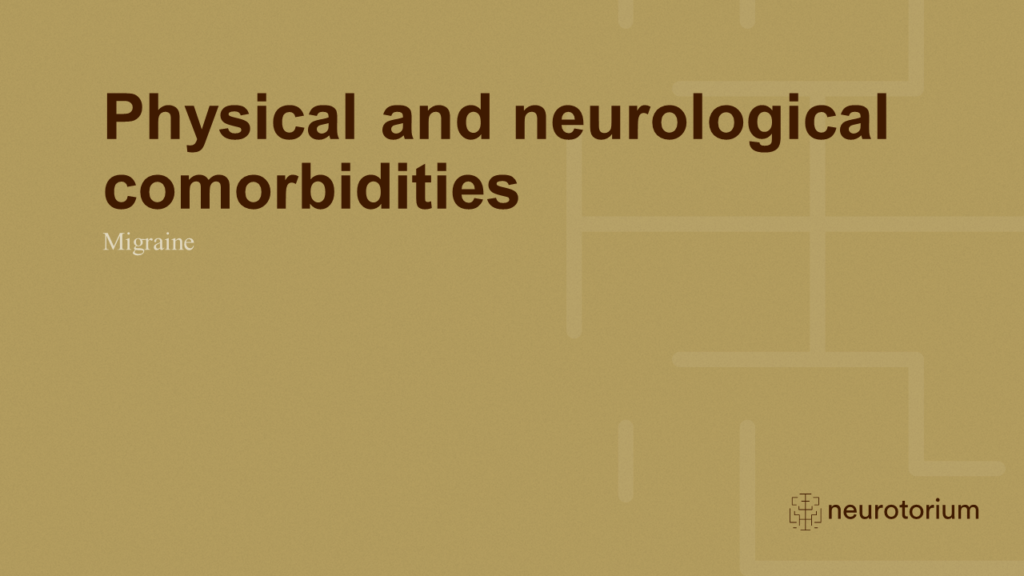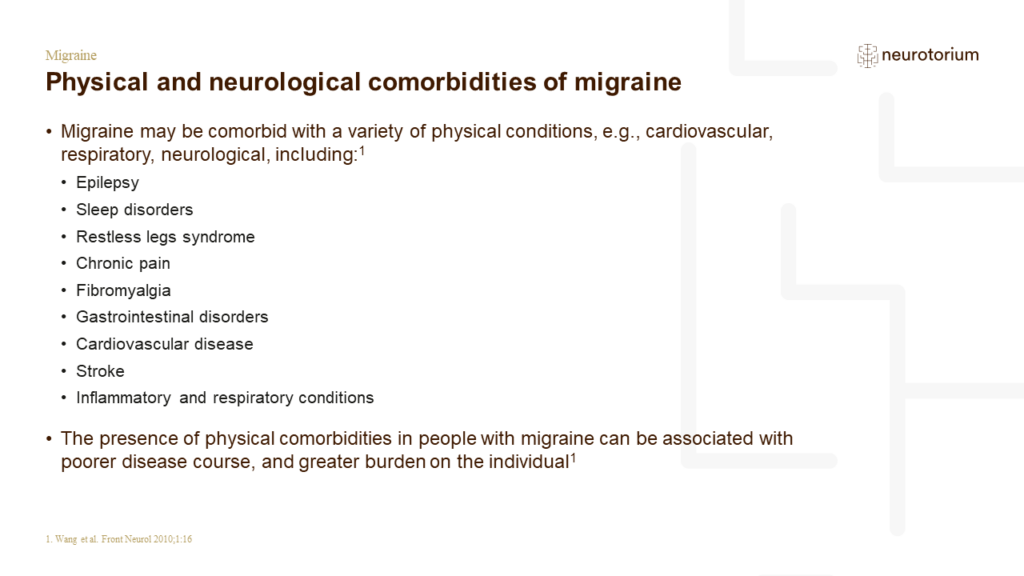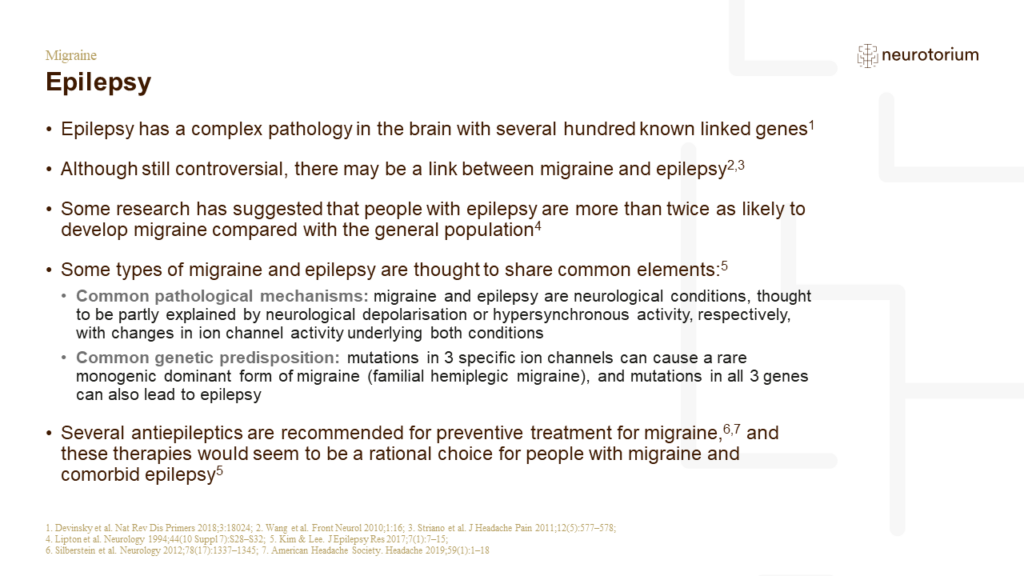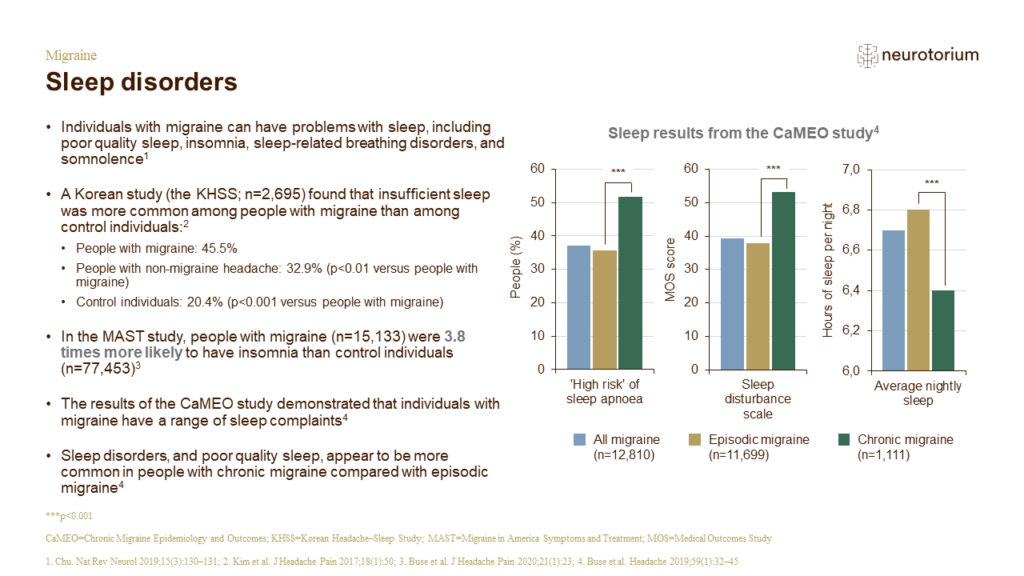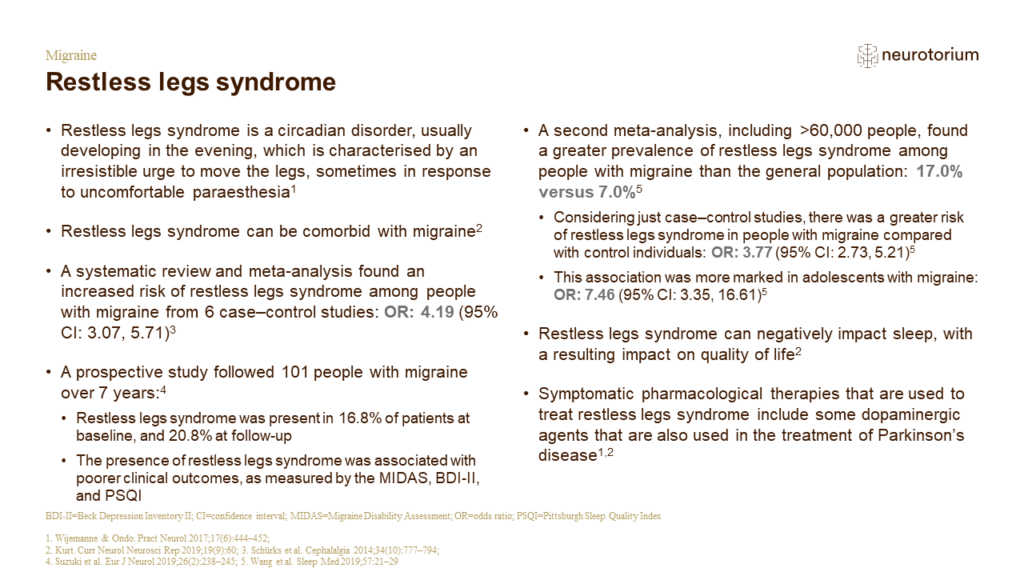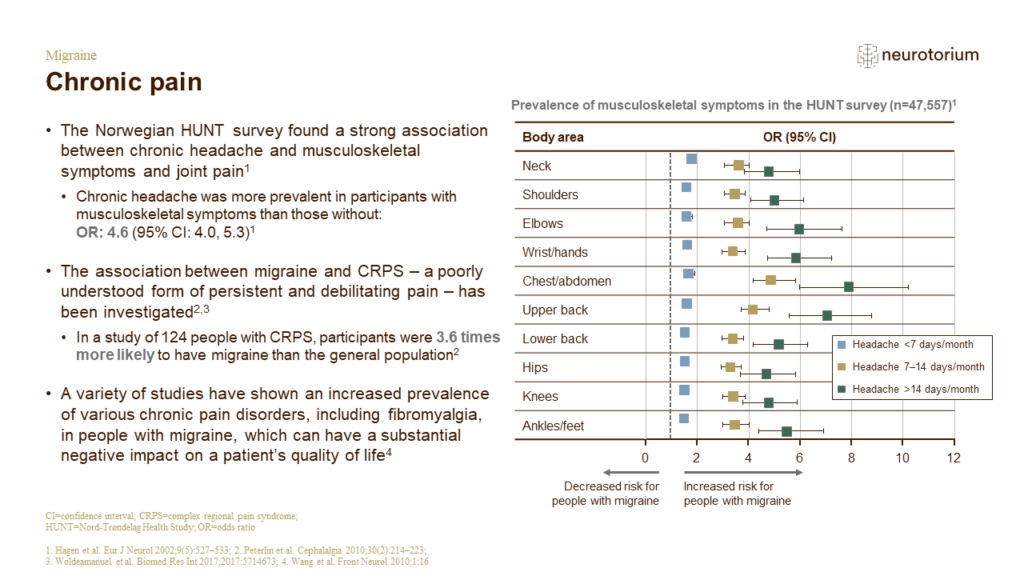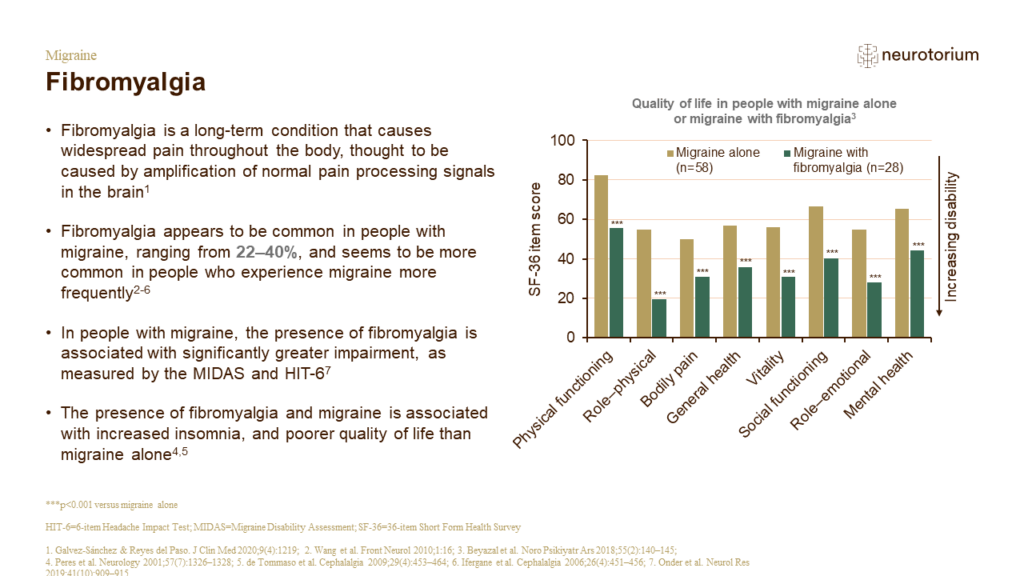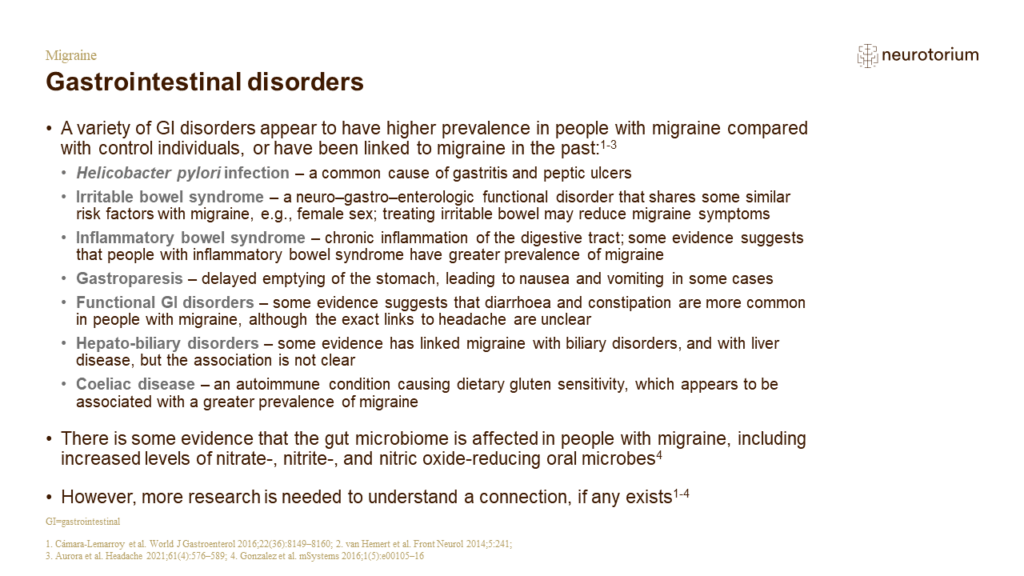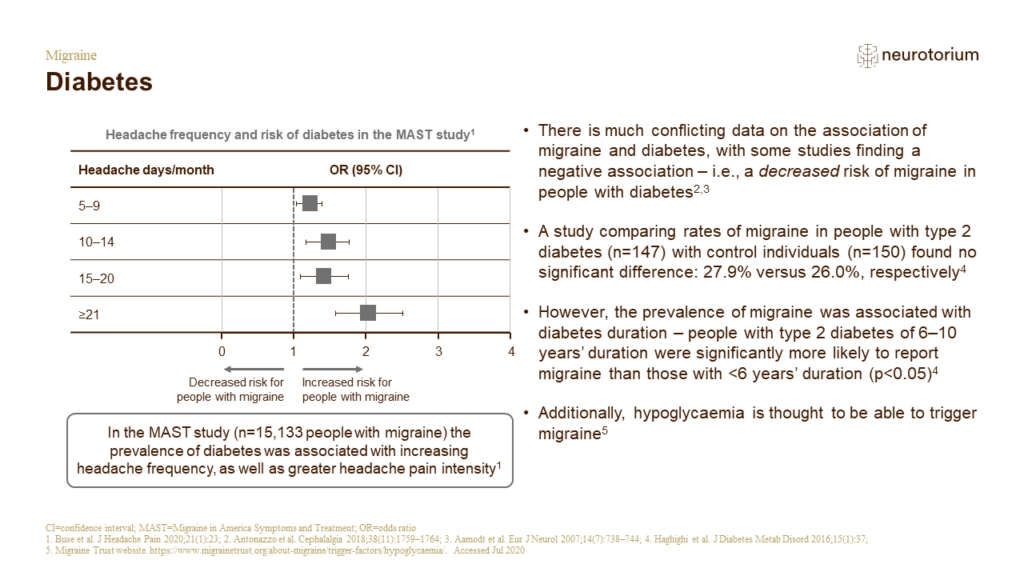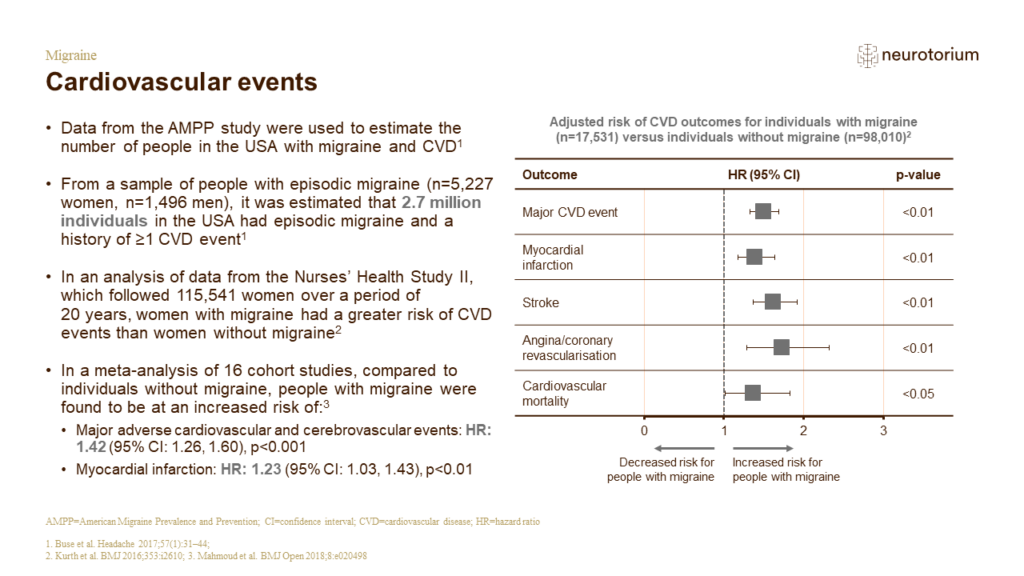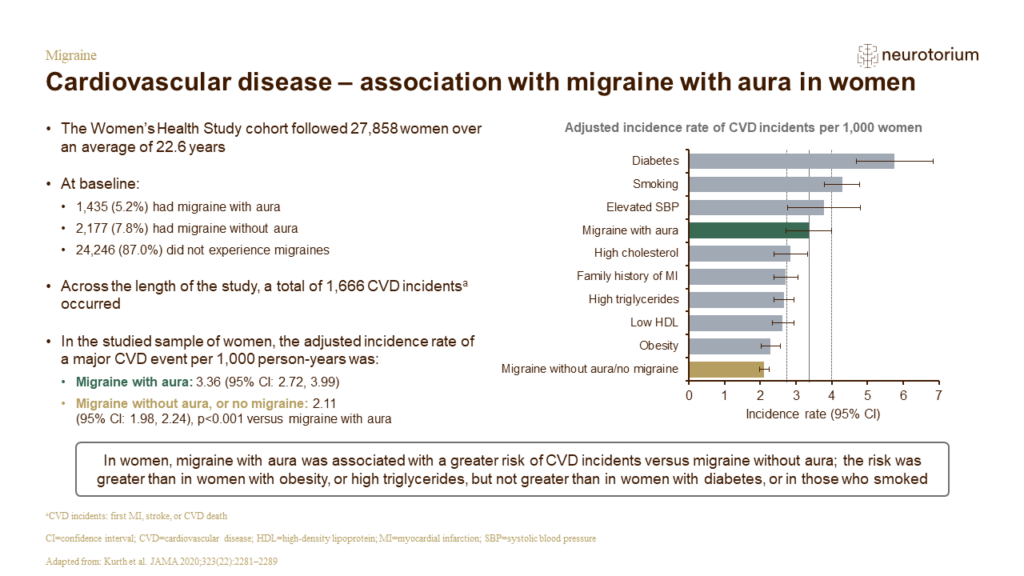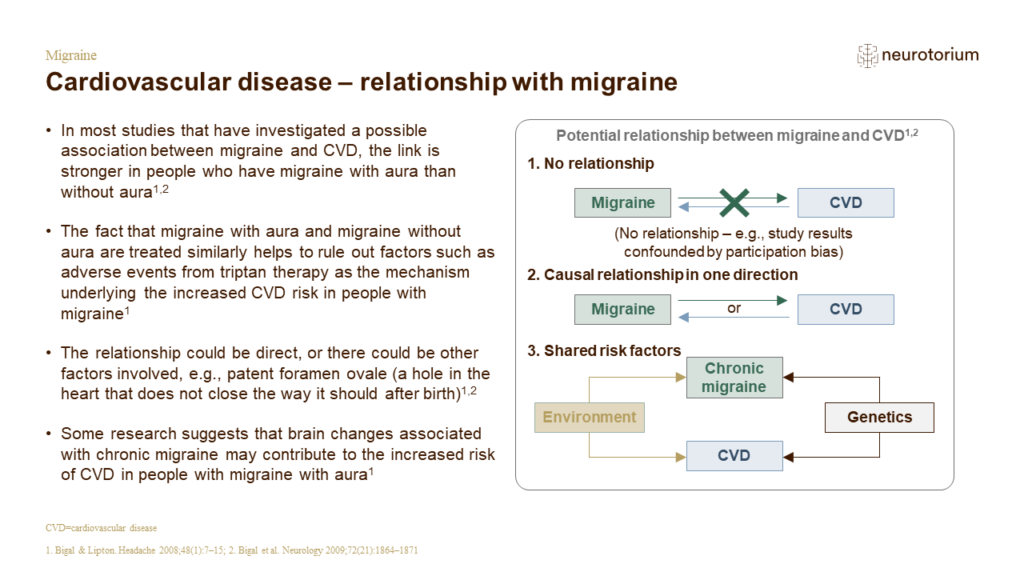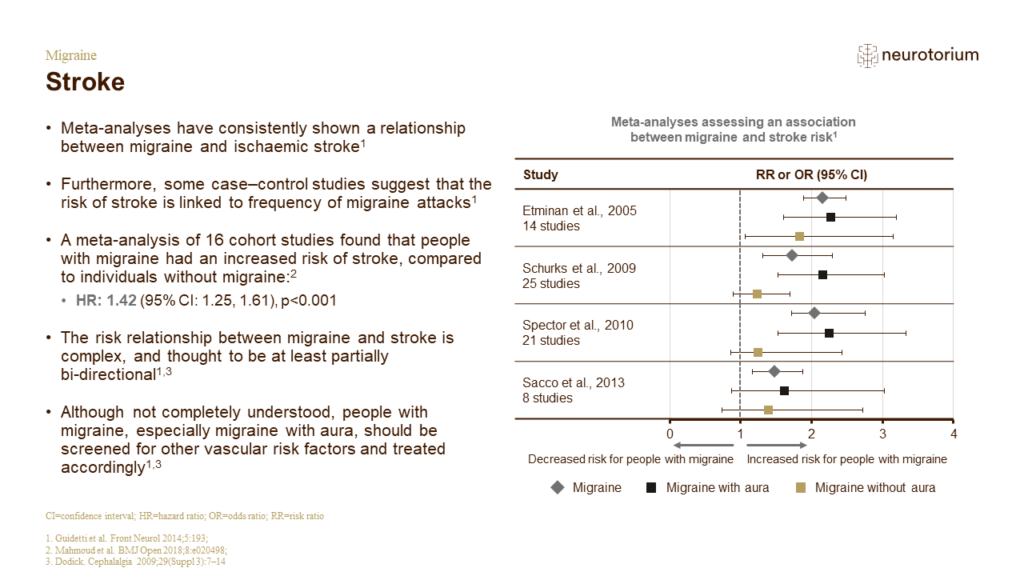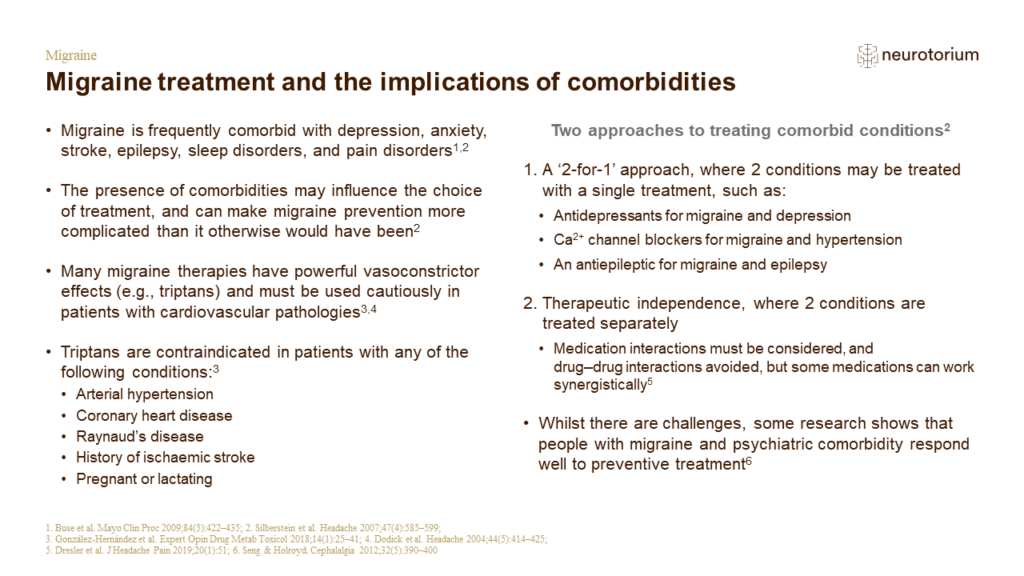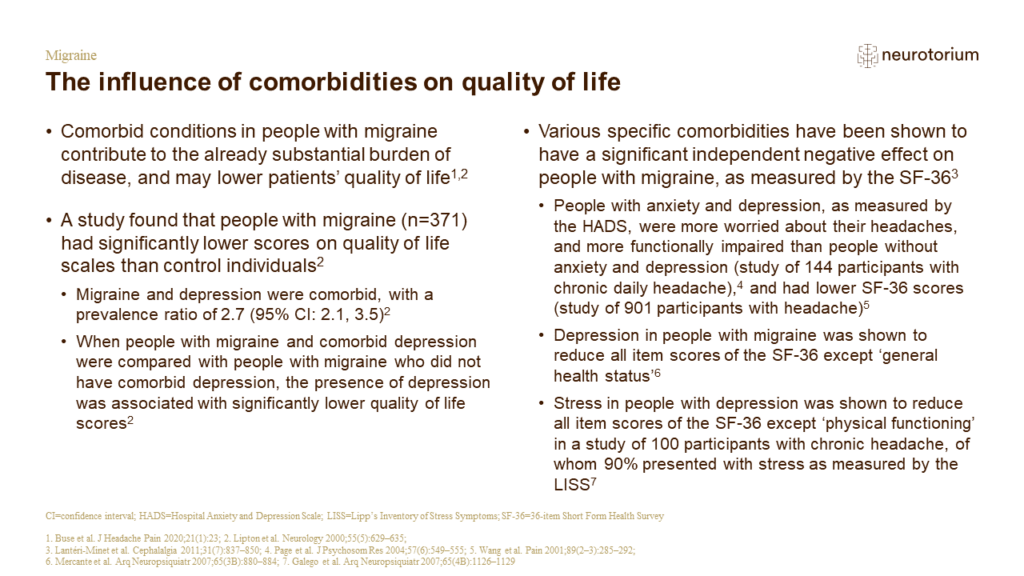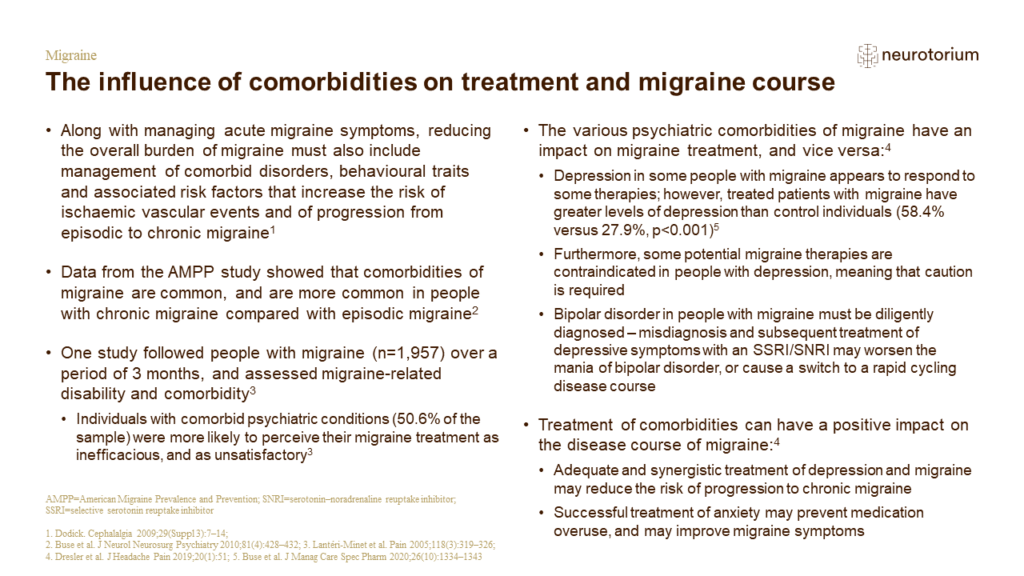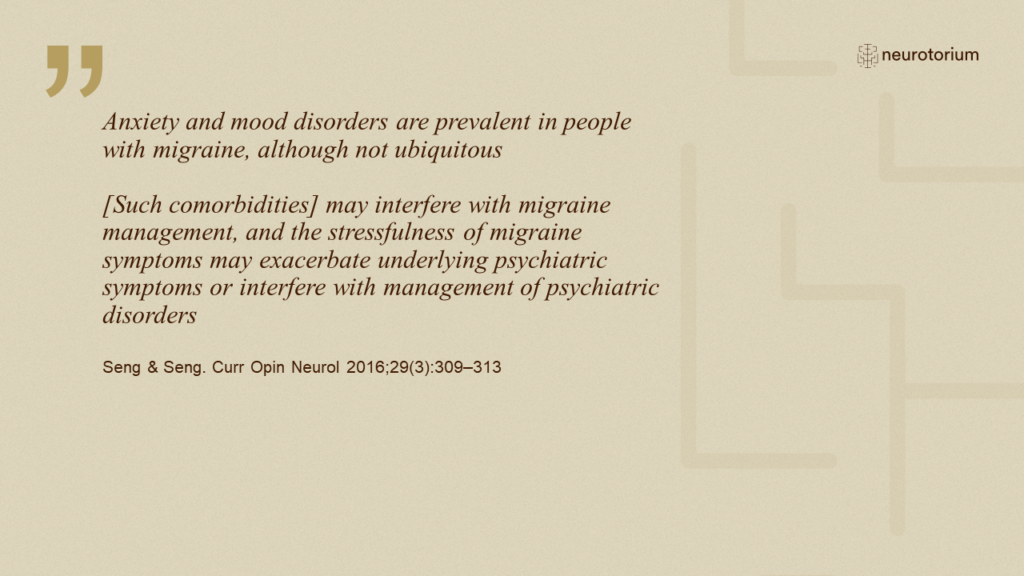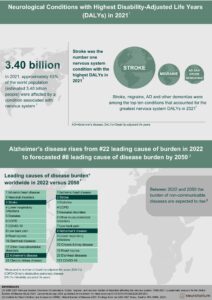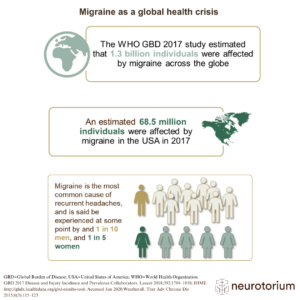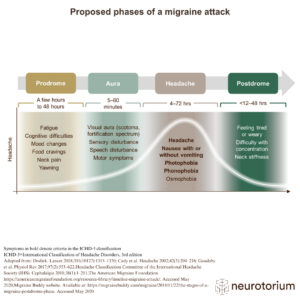Index for
slide deck
Introduction
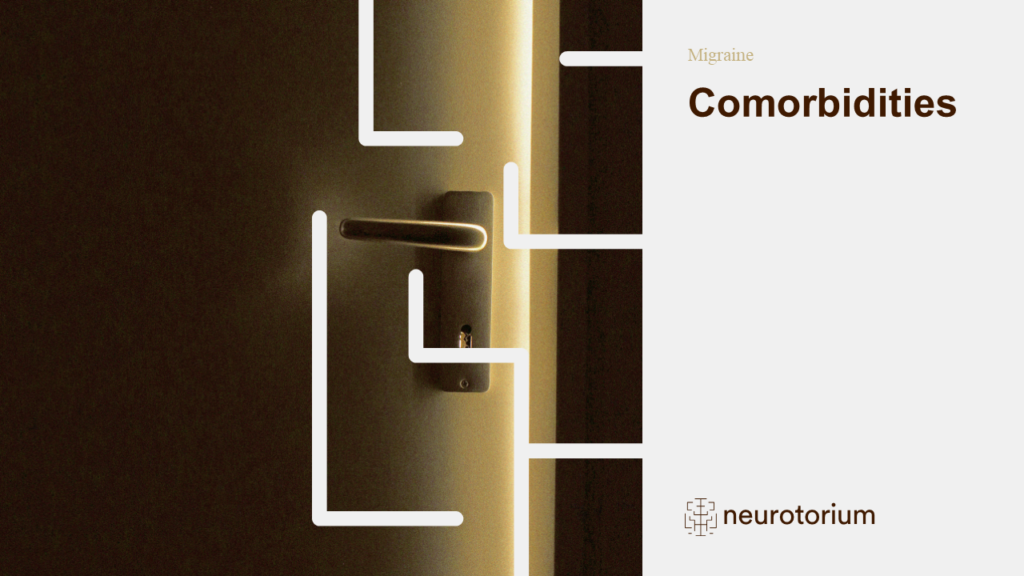
Migraine - Comorbidities
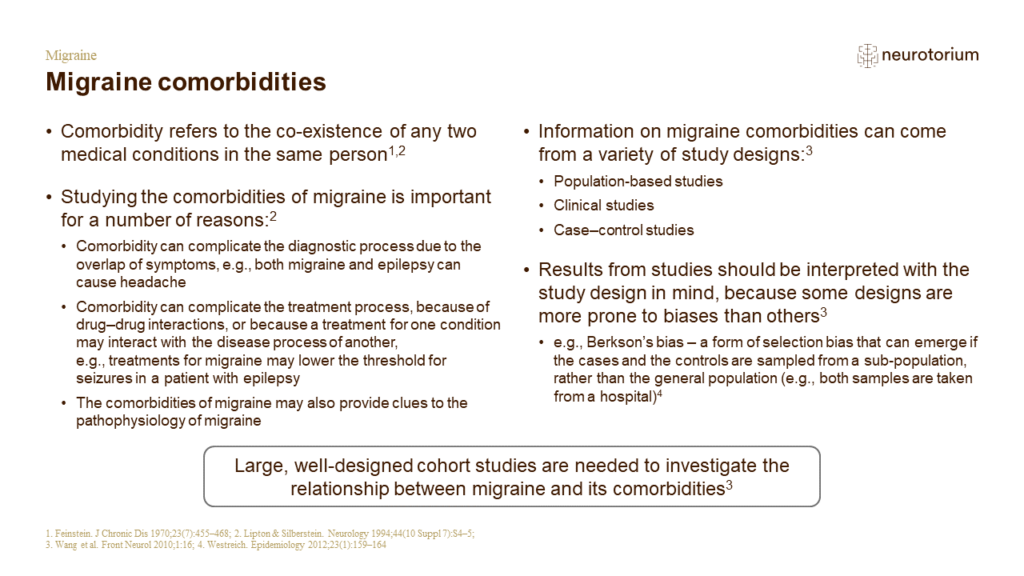
Migraine comorbidities
Comorbidities are a feature of migraine and are explored in this slide deck.
References used on slide:
Feinstein AR. The pre-therapeutic classification of co-morbidity in chronic disease. J Chronic Dis 1970; 23 (7): 455–468.
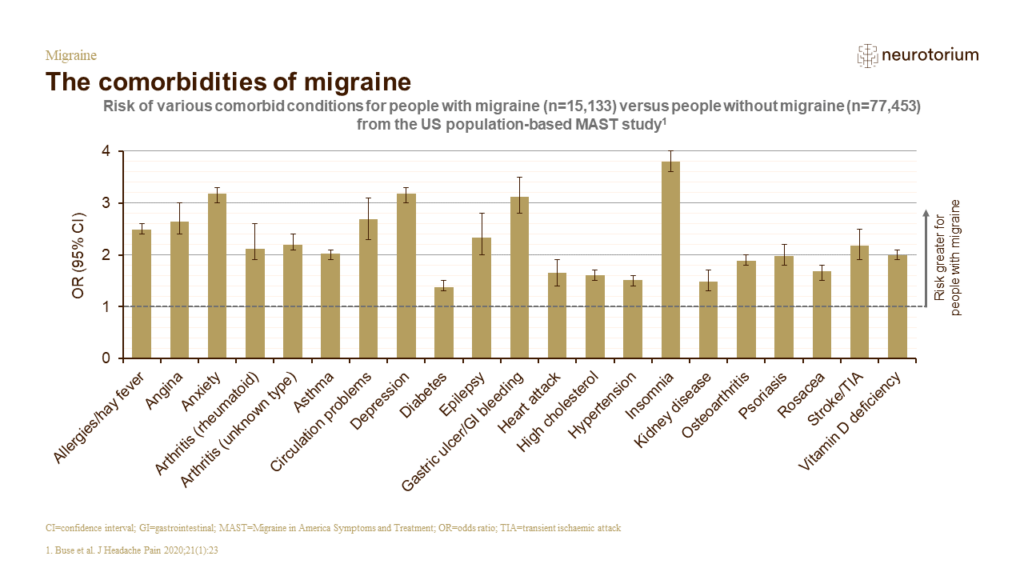
The comorbidities of migraine
The Migraine in America Symptoms and Treatment (MAST) study was designed to evaluate patterns of migraine consultation, diagnosis, treatment and comorbid health burden among a representative non-clinical sample of people with migraine, who had an average of at least one h…
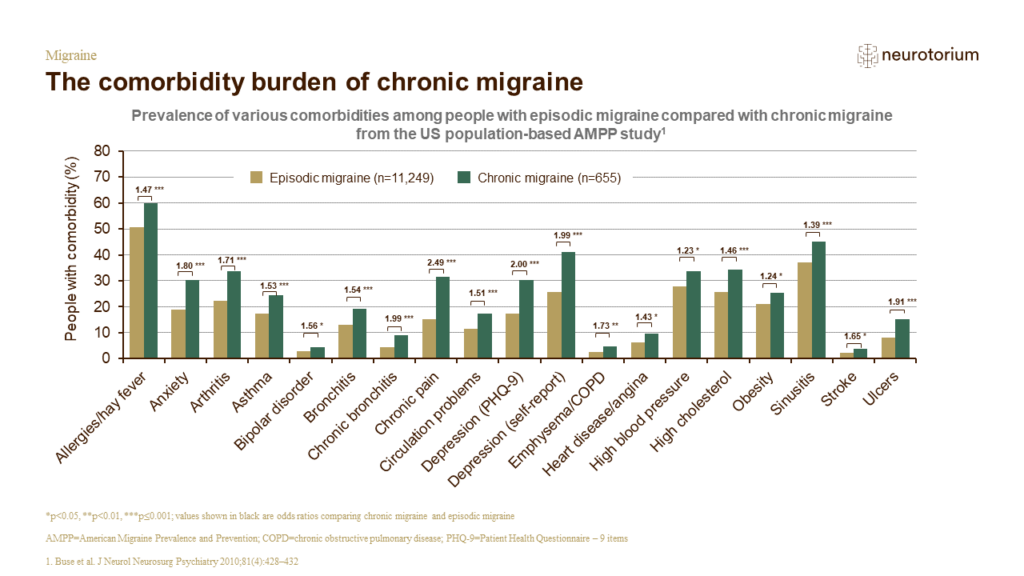
The comorbidity burden of chronic migraine
Phase 2 of the American Migraine Prevalence and Prevention (AMPP) study was a survey of individuals with headache, of whom 11,249 had episodic migraine, and 655 had chronic migraine.[Buse et al., 2010] People with chronic migraine were significantly less likely to be empl…
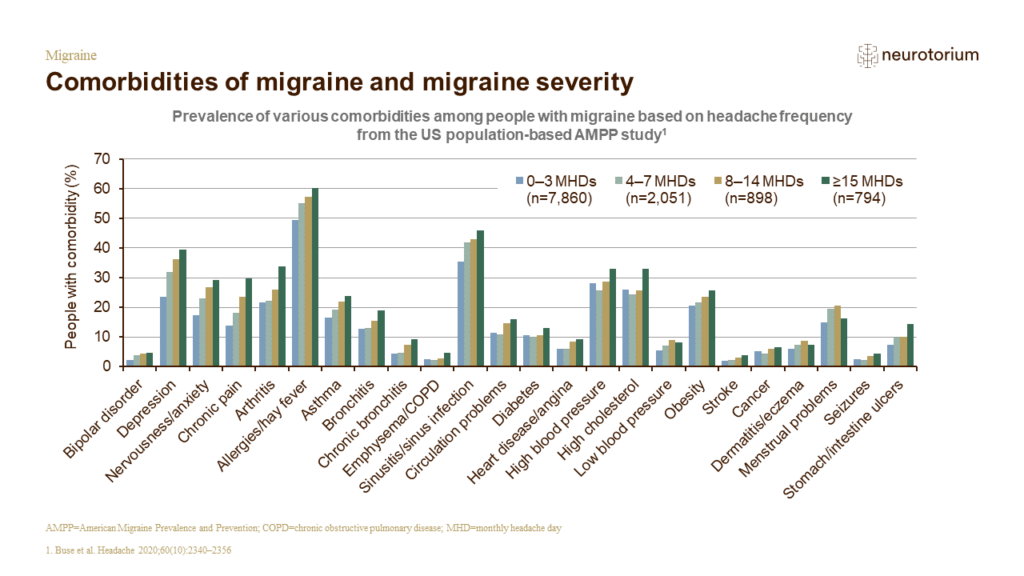
Comorbidities of migraine and migraine severity
In the AMPP study, as shown on the slide, the prevalence of a variety of comorbid conditions increased as the number of monthly headache days (MHDs) increased.[Buse et al., 2020]
Reference:
Buse DC, Reed ML, Fanning KM, et al. Demographics, headache features, and comorbidi…
Psychiatric comorbidities
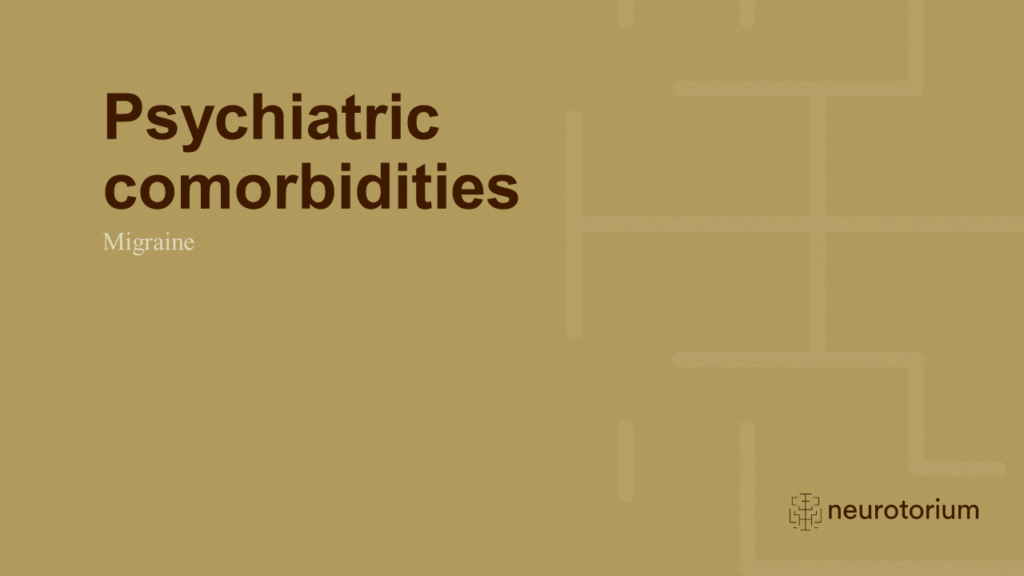
Psychiatric comorbidities
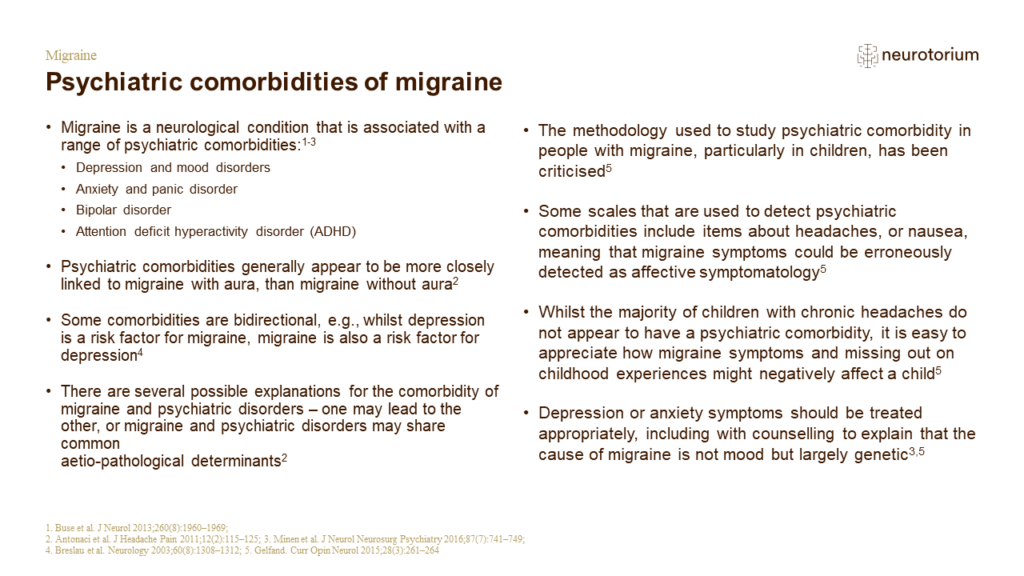
Psychiatric comorbidities of migraine
Determining the relationship between migraine and a comorbid condition is complicated; one cohort study aimed to examine the relationship by interviewing people with migraine (n=496), people with headaches (n=151), and people without migraine (n=539) – and then re-intervi…
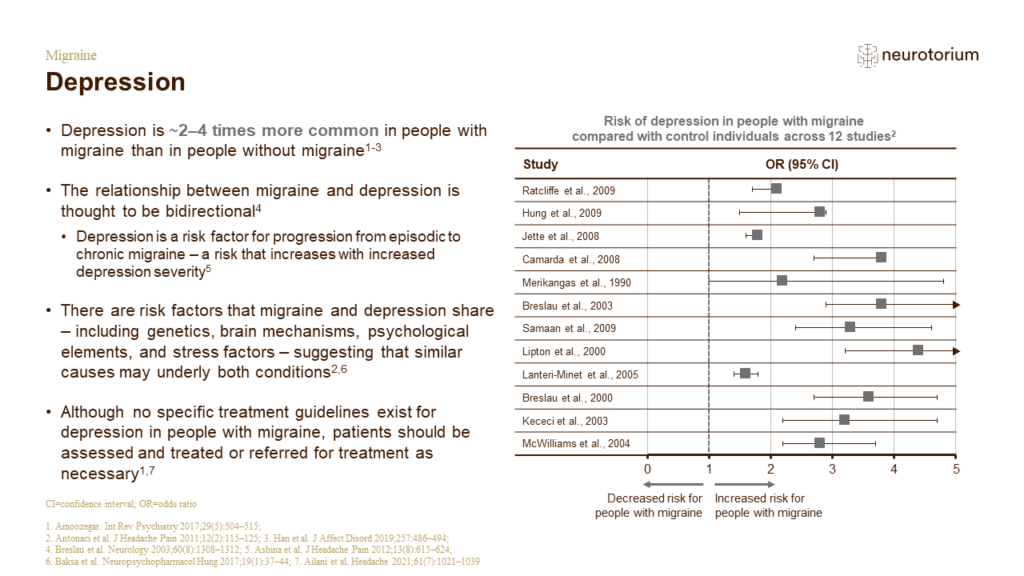
Depression
Depression is common among people with migraine – roughly 2–4 times more common than in the general population.[Amoozegar, 2017; Antonaci et al., 2011; Han et al., 2019] The comorbidity of depression and migraine increases the burden of migraine on patients and society.[A…
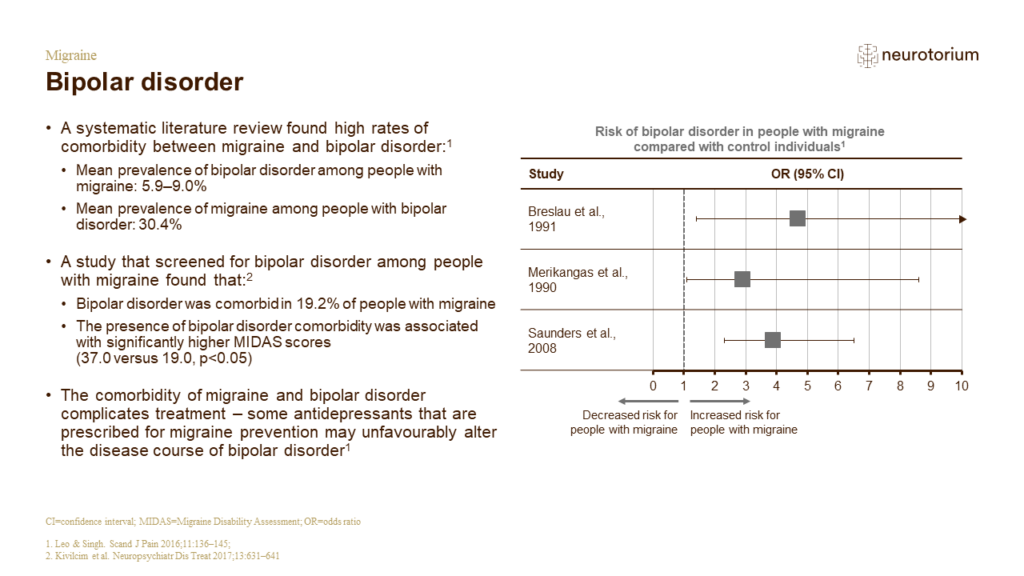
Bipolar disorder
As shown on the slide, the risk of bipolar disorder appears to be greater among people with migraine than the general population.[Leo & Singh, 2016] There also appears to be an increased risk of bipolar disorder in people with migraine with aura than for those with migrai…
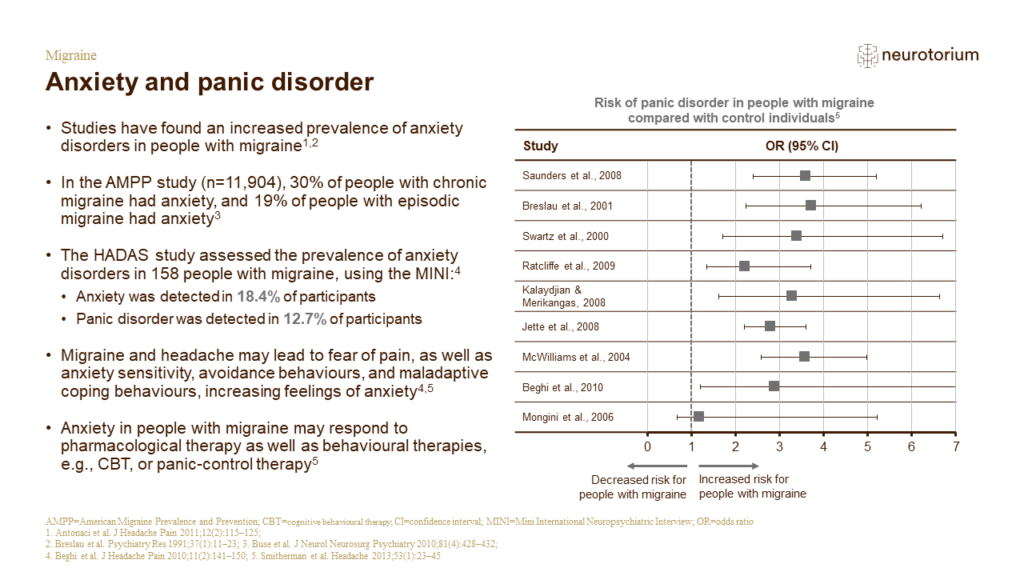
Anxiety and panic disorder
In the HADAS study, the Mini International Neuropsychiatric Interview (MINI) was administered to people with migraine without aura (n=158) and people with tension-type headache or migraine plus tension-type headache (n=110; n=106 for migraine alone).[Beghi et al., 2010] O…
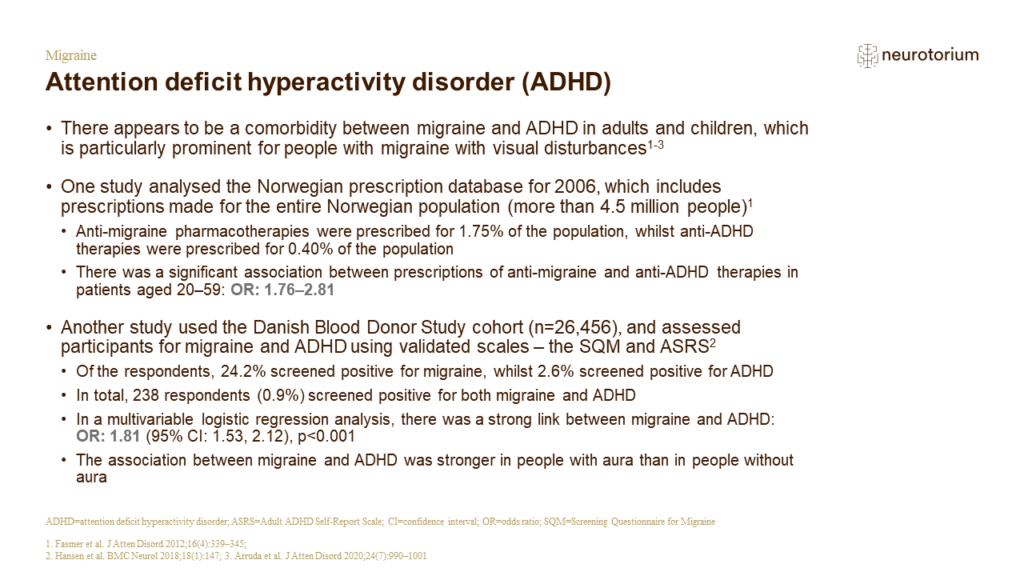
Attention deficit hyperactivity disorder (ADHD)
As shown on the slide, studies using prescription databases and using validated scales have shown an association between migraine and ADHD.[Arruda et al., 2020; Hansen et al., 2018; Fasmer et al., 2012] This association appears to rise throughout the third and fourth deca…
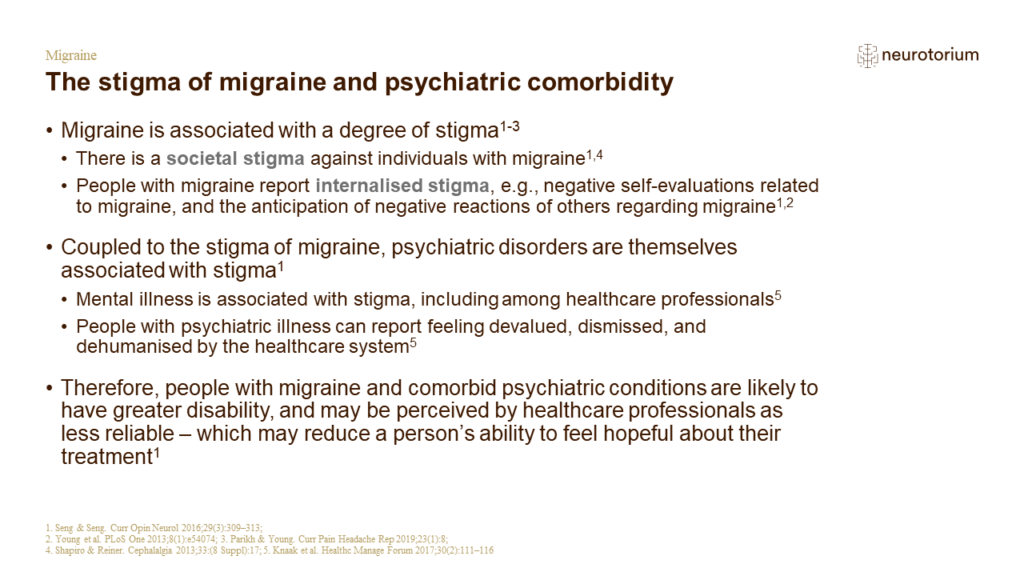
The stigma of migraine and psychiatric comorbidity
People with migraine suffer a degree of stigma, including internalised stigma.[Seng & Seng, 2016; Young et al., 2013] Psychiatric disorders are also associated with a stigma, and so when the two conditions are comorbid, this worsens the burden of migraine.[Seng & Seng, 20…


